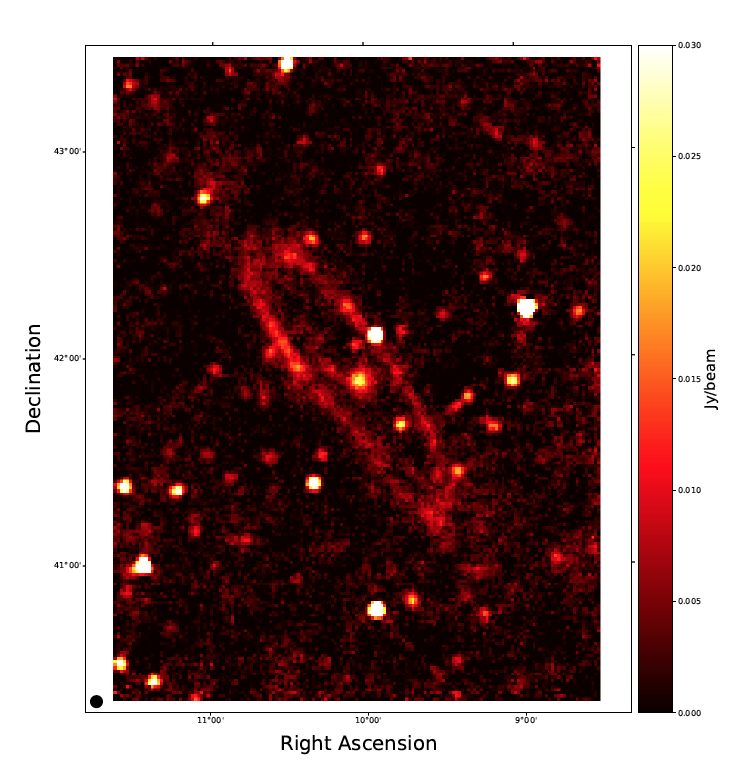Sharpest radio image of the Andromeda galaxy achieved
The Andromeda Galaxy is the closest spiral galaxy to the Milky Way – but still 2.5 million light-years away. Details are therefore difficult to discern. This makes it all the more important to observe our future home (Andromeda will merge with the Milky Way in a few billion years) in all possible wavelengths. Each region of the spectrum reveals different secrets.
Such an image has now been obtained with unprecedented accuracy at the microwave frequency of 6.6 GHz by physicist Sofia Fatigoni of the University of British Columbia, together with colleagues from the Sapienza University of Rome and the Italian National Institute of Astrophysics. «This image will allow us to study the structure of Andromeda and its contents in more detail than was previously possible,» said Fatigoni, a doctoral student in UBC’s Department of Physics and Astronomy. «Understanding the physical processes going on inside Andromeda allows us to better understand what’s going on inside our own galaxy – as if we were looking at ourselves from the outside.»
Prior to this study, no maps had covered such a large area of the sky around the Andromeda galaxy in the microwave band between 1 GHz and 22 GHz. In this range, the galaxy’s emission is very weak, making its structure difficult to detect. However, because only in this frequency range are certain features visible, a map in this frequency range is crucial for understanding the physical processes in Andromeda.
To observe Andromeda at this frequency, researchers needed a radio telescope with a large effective area. For the study, the scientists turned to the Sardinia Radio Telescope in Italy, a 64-meter-long, fully steerable telescope that can operate at high radio frequencies. The researchers needed 66 hours of observation and rigorous data analysis to map the galaxy with high sensitivity. They were then able to estimate the rate of star formation in Andromeda and create a detailed map that highlights the «disk of the galaxy» as the region where new stars are born. «By combining this new image with previously acquired images, we have made significant progress in clarifying the nature of Andromeda’s microwave emissions and are able to distinguish physical processes occurring in different regions of the galaxy,» said Dr. Elia Battistelli, professor in the Sapienza Department of Physics and coordinator of the study. «In particular, we have been able to determine the fraction of emissions due to thermal processes related to the early stations of star formation and the fraction of radio signals due to non-thermal mechanisms related to cosmic rays spiraling in the magnetic field of the interstellar medium,» Fatigoni said.

